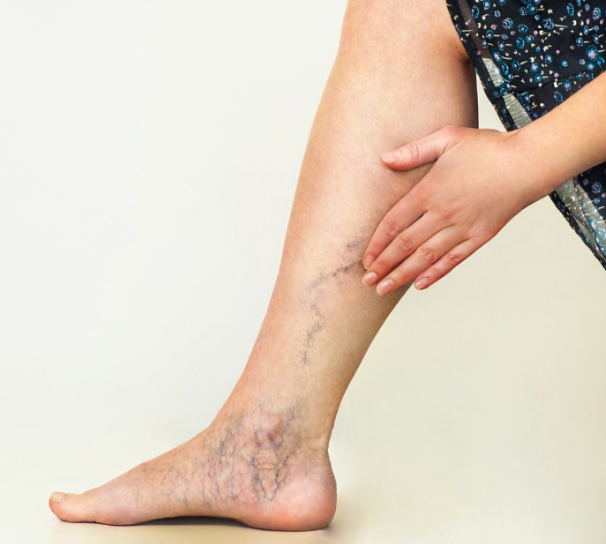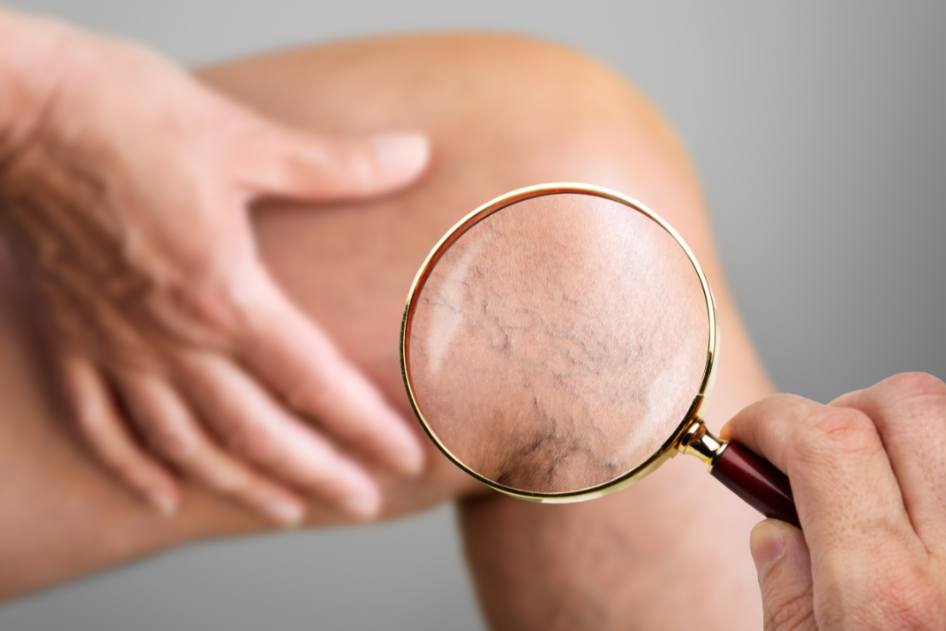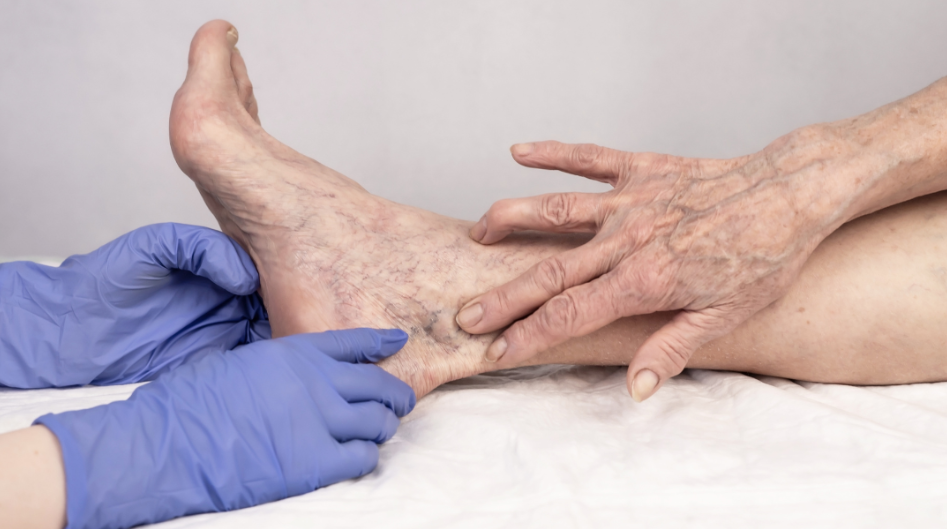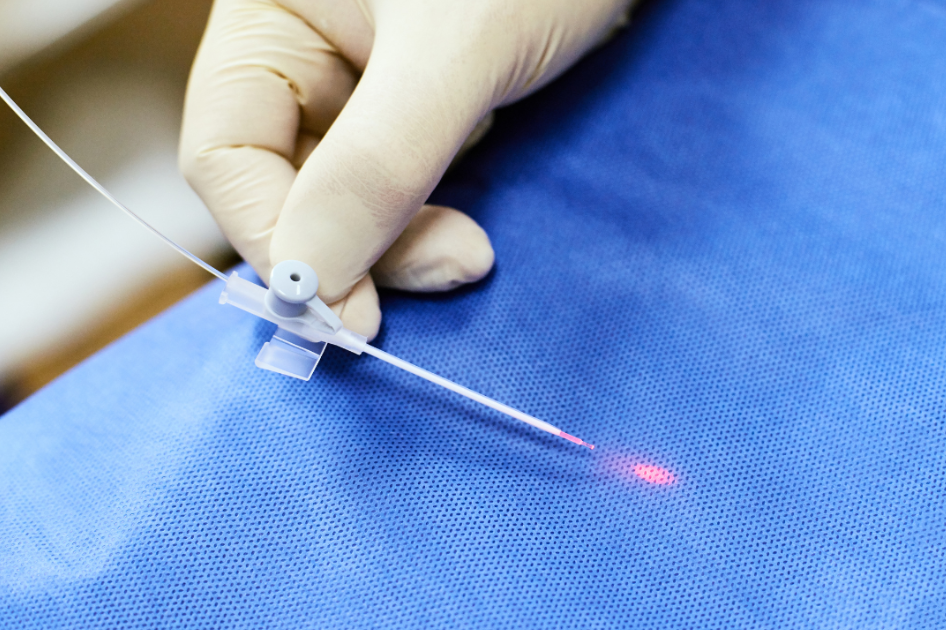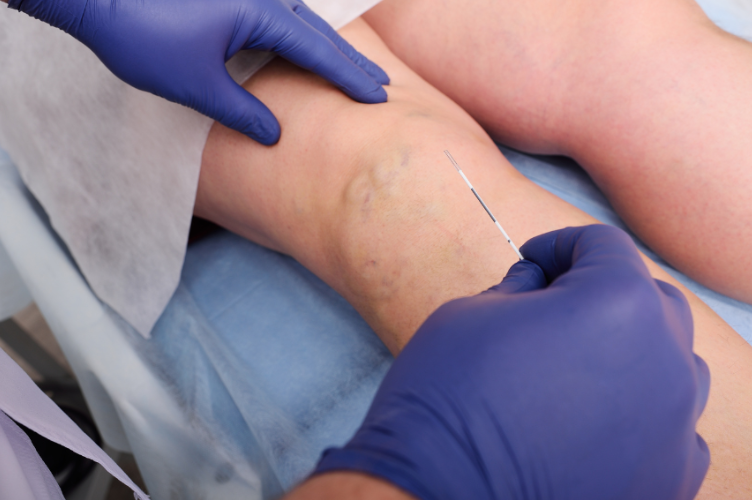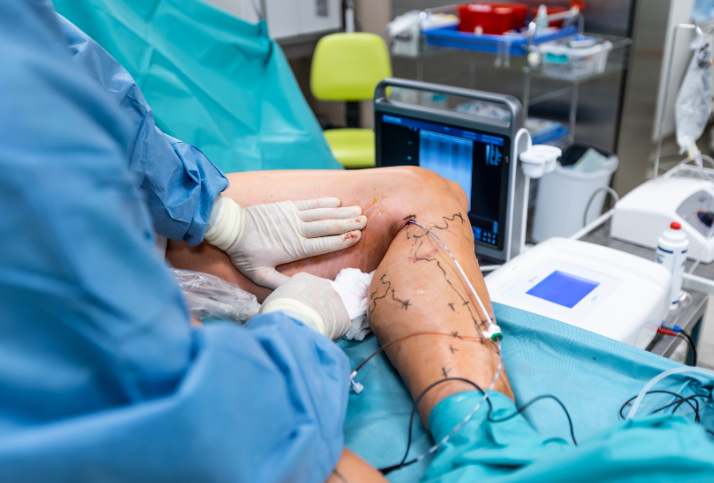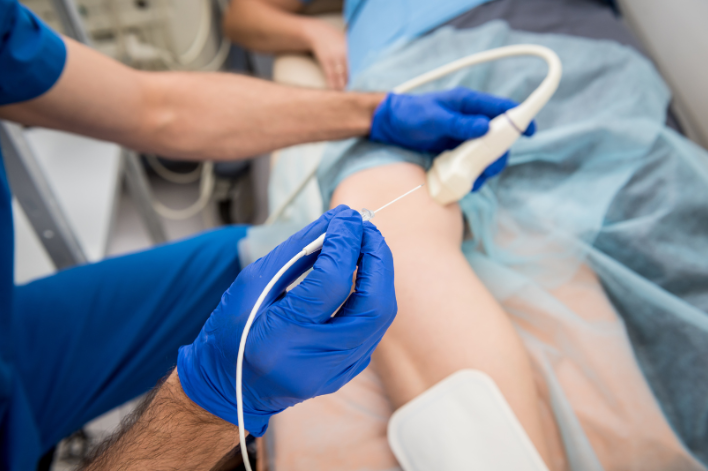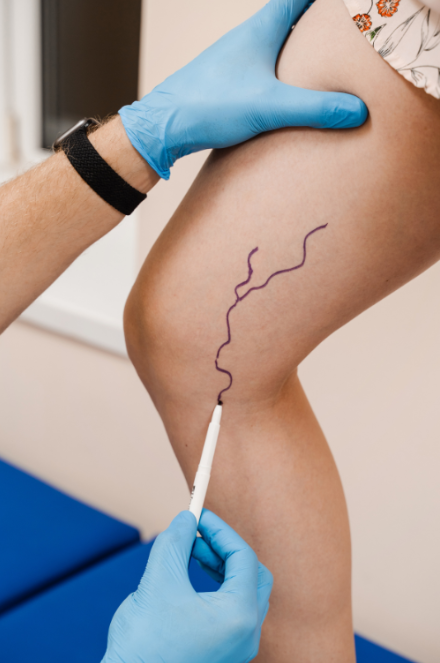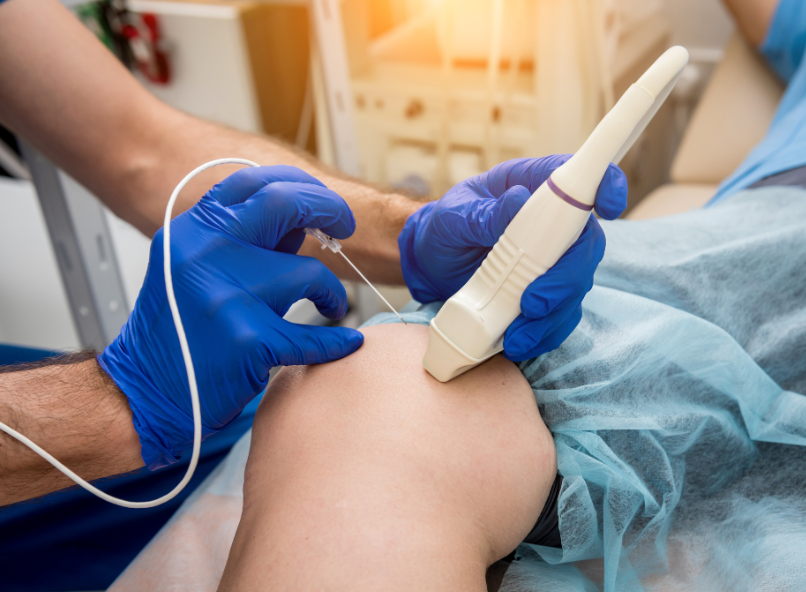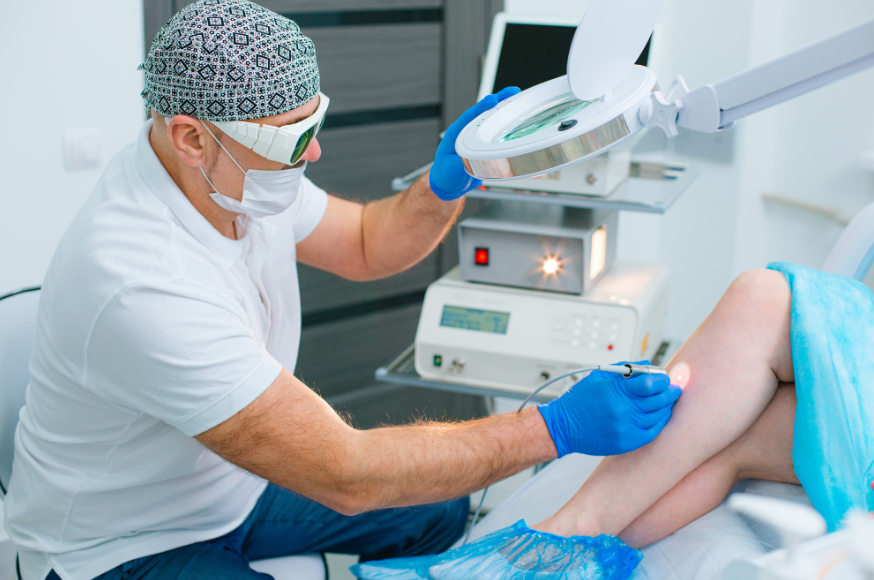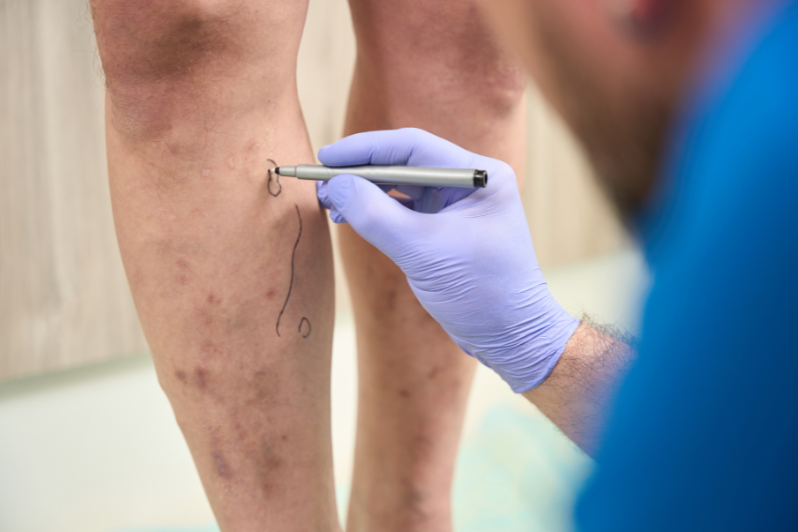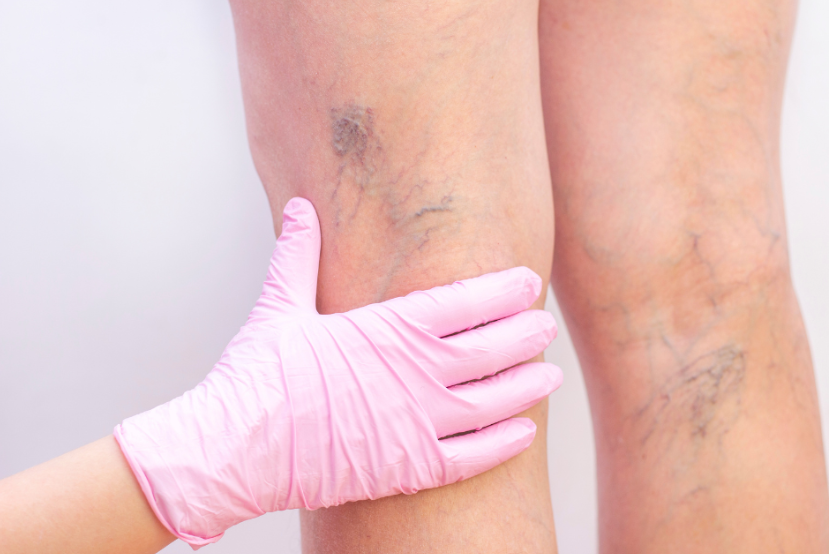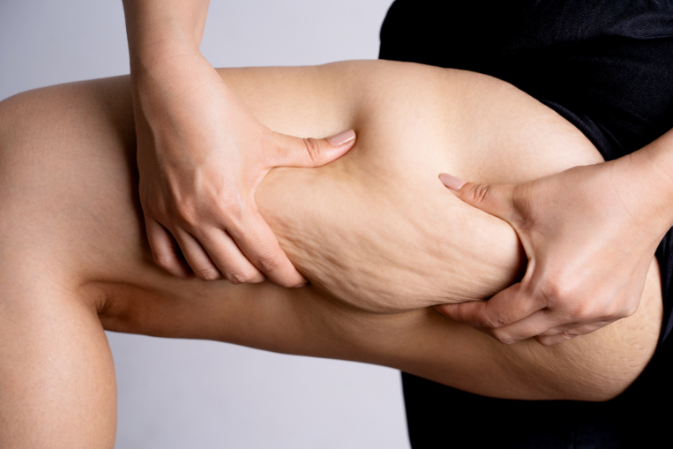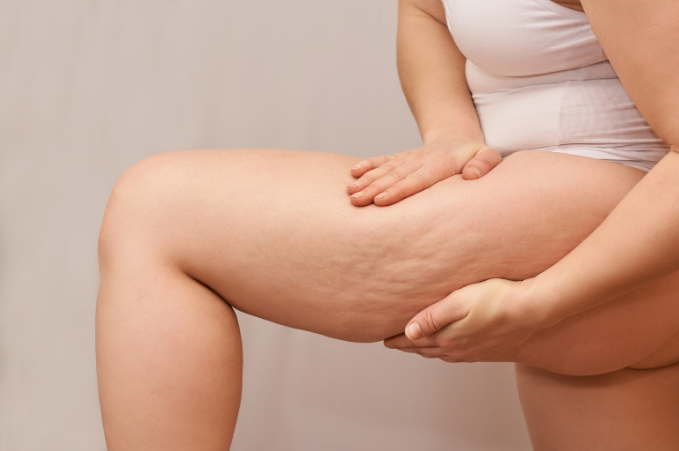VASCULAR MEDICINE
Vascular medicine is a specialised field focused on diagnosing, treating, and managing conditions affecting the blood vessels, including veins and arteries. This branch of medicine addresses a range of issues, from varicose veins and spider veins to more complex vascular diseases, with the aim of improving circulation, reducing symptoms, and enhancing overall vascular health. At our clinic, we offer advanced treatments, including injectables and laser therapies, to provide effective, minimally invasive solutions for various vascular concerns, ensuring optimal outcomes and improved vascular health for our patients.
Consultation
A consultation with our vascular surgeon is an essential first step in your treatment journey. During this visit, the surgeon will assess your individual needs and concerns to recommend the most effective treatment option for you. This personalized approach ensures that you receive care tailored to achieve the best possible results for your unique situation.
Price: £280
Sclerotherapy for Lower Limbs Thread Veins
Lower limb thread vein sclerotherapy is a minimally invasive treatment specifically for small, visible veins—often called spider or thread veins—on the legs. By injecting a special solution into these veins, they collapse and are gradually absorbed by the body, redirecting blood flow to healthier veins and improving circulation. This outpatient procedure takes about 30-45 minutes, does not require anesthesia, and effectively reduces the visibility of thread veins. While minor bruising or swelling may follow the treatment, these side effects usually resolve within days. Compression stockings are recommended post-treatment, with visible results often appearing within weeks to a few months.
Hands and/or Feet Veins Removal With Sclerotherapy
For prominent veins in the hands and feet, sclerotherapy offers an effective solution. During the procedure, a specialized solution is injected into visible veins, prompting them to collapse and fade over time. This treatment, which lasts about 60 minutes and doesn’t require anesthesia, enhances the look and feel of the skin on hands or feet. Some mild bruising or swelling may occur post-treatment but typically clears up in a few days. Results can be seen within weeks, making it a safe and minimally invasive option for those seeking improved appearance and comfort in these areas.
Hands and/or Feet Veins Removal With T.E.L.C
Transilluminated Endovenous Laser Closure (T.E.L.C.) is a minimally invasive procedure aimed at reducing prominent hand and foot veins. Using a specialized light to visualize veins, T.E.L.C. involves making a small incision and applying laser energy to collapse the targeted veins, which are then absorbed by the body. This treatment, ideal for larger veins that may not respond to sclerotherapy, is performed under local anesthesia in 30-60 minutes. Afterward, mild bruising or swelling may occur, but recovery is typically swift, with minimal downtime. T.E.L.C. helps restore a smooth, youthful look to the hands and feet, easing both discomfort and aesthetic concerns.
Endovenous Laser Ablation (EVLA)
Endovenous Laser Ablation (EVLA) uses laser energy to treat varicose veins, including those in the lower limbs, hands, and feet. By inserting a thin laser fiber into the vein, heat is applied to seal it off, causing the treated vein to be absorbed by the body. This outpatient procedure, performed under local anesthesia and guided by ultrasound, takes 30-60 minutes. Post-treatment, minor bruising or swelling may occur, but most patients can resume normal activities within a day or two. Compression garments are recommended to support healing, and results include improved circulation, reduced discomfort, and long-lasting cosmetic improvement.
Radiofrequency Ablation (RFA)
Radiofrequency Ablation (RFA) treats varicose veins by using radiofrequency energy to close off affected veins, helping blood reroute to healthier veins. A thin catheter is inserted through a small incision, and radiofrequency energy is applied to collapse the vein wall. Ideal for veins in the hands, feet, and lower limbs, this 30-60 minute treatment requires only local anesthesia. While minor bruising or swelling may occur afterward, recovery is quick, and compression stockings are often recommended. Results are long-lasting, with relief from symptoms like aching, swelling, and visible veins.
MO.CA (Mechanochemical Ablation)
MO.CA (Mechanochemical Ablation) combines mechanical disruption and a sclerosant solution to treat varicose veins in the hands, feet, and legs. By inserting a specialized catheter with a rotating tip, the vein’s lining is gently damaged, enhancing the effects of the sclerosant and allowing the vein to collapse. This procedure, performed under local anesthesia, typically takes 30-45 minutes and is minimally invasive. Post-treatment swelling or bruising may occur, but patients usually resume normal activities within a day. Compression stockings are suggested for optimal healing. MO.CA offers an effective, comfortable solution for lasting vein improvement with minimal downtime.
VenaSeal SuperGlue
VenaSeal SuperGlue is a unique, non-thermal treatment for closing off varicose veins. Through a small catheter, a medical adhesive is applied to seal problematic veins, redirecting blood flow to healthier veins and improving circulation. Suitable for large veins in the hands, feet, and lower limbs, VenaSeal takes about 30-60 minutes, requires minimal downtime, and does not involve tumescent anesthesia. While mild swelling or bruising may follow, it typically resolves quickly. This procedure is a comfortable, effective option with long-lasting results, enhancing both appearance and comfort.
Micro-Phlebectomy
Micro-Phlebectomy is a minimally invasive technique that removes large, bulging varicose veins through tiny skin incisions. Ideal for those whose varicose veins cause discomfort or cosmetic concerns and have not responded to conservative treatments like compression stockings, Micro-Phlebectomy is performed under local anesthesia. Small incisions allow for precise vein removal with specialized tools, offering immediate cosmetic improvement, minimal scarring, and a quick recovery. Some mild bruising or swelling may occur post-procedure, typically resolving in a few days. Compression stockings are often recommended to support the healing process. Micro-Phlebectomy is an effective, lasting solution to relieve symptoms and enhance leg appearance.
EVLA (Endovenous Laser Ablation) + Micro-Phlebectomy
EVLA (Endovenous Laser Ablation) + Micro-Phlebectomy combines two powerful treatments for effective varicose vein management. EVLA uses laser energy to seal off larger varicose veins internally, while Micro-Phlebectomy removes the remaining visible veins through small incisions. This combination is ideal for addressing both large and surface veins that cause pain or cosmetic issues. EVLA involves inserting a thin laser fiber into the vein, delivering heat to close it, followed by Micro-Phlebectomy, which gently removes the more prominent veins. This dual approach under local anesthesia ensures comprehensive treatment, minimal scarring, and immediate cosmetic results. Patients may experience mild swelling or bruising but typically resume normal activities within days, with compression stockings recommended to aid healing.
RFA (Radiofrequency Ablation)
+ Micro-Phlebectomy
RFA (Radiofrequency Ablation) + Micro-Phlebectomy offers a comprehensive approach for treating large and visible varicose veins. RFA uses radiofrequency energy to heat and close larger veins, while Micro-Phlebectomy targets the remaining superficial veins through tiny incisions. This combination treatment, performed under local anesthesia, is especially beneficial for patients with prominent, symptomatic veins. During RFA, a thin catheter delivers radiofrequency energy to collapse the vein, and Micro-Phlebectomy removes smaller bulging veins. Benefits include minimal scarring, quick recovery, and immediate aesthetic improvement. Mild bruising or swelling may occur, and compression stockings are recommended to support healing. Together, these treatments provide lasting relief and improved leg appearance.
MO.CA (Mechanochemical Ablation) + Micro-Phlebectomy
MO.CA (Mechanochemical Ablation) + Micro-Phlebectomy is a dual procedure that effectively treats large, deeper veins and prominent surface varicose veins. MO.CA uses a rotating catheter and sclerosant injection to close larger veins, while Micro-Phlebectomy removes smaller, visible veins through tiny skin incisions. This approach is particularly suitable for those with both deep and surface veins causing discomfort or cosmetic concerns. Both procedures are performed under local anesthesia with minimal scarring and quick recovery. Patients might experience mild bruising or swelling, but most resume normal activities in a few days, with compression stockings recommended to support healing. This combination offers a lasting solution for varicose vein symptoms and appearance.
VenaSeal SuperGlue + Micro-Phlebectomy
VenaSeal SuperGlue + Micro-Phlebectomy combines the effectiveness of VenaSeal adhesive with the precision of Micro-Phlebectomy to treat deeper and visible varicose veins. VenaSeal uses a medical adhesive to seal larger veins, and Micro-Phlebectomy addresses surface bulging veins through tiny skin incisions, making it ideal for those experiencing both discomfort and cosmetic concerns. The procedure typically takes 1 to 2 hours, with minimal downtime. Afterward, mild swelling or bruising may occur, and compression stockings may be recommended to support healing. This treatment combination offers lasting relief and an improved appearance of varicose veins, allowing most patients to resume normal activities within a day or two.
Lipedema
Lipedema is a chronic, progressive disorder of adipose tissue that predominantly affects women and results in the symmetrical accumulation of excess fat in the lower body, often extending from the hips to the ankles, sometimes affecting the arms. Unlike typical obesity, lipedema is characterized by an abnormal distribution of fat cells resistant to diet and exercise, leading to disproportionate body contouring.
Symptoms
Patients with lipedema commonly experience pain, sensitivity, and swelling in the affected areas, with tissue that is often cold to the touch. The condition is associated with a tendency to bruise easily, even with minimal trauma. As it advances, lipedema can cause decreased mobility and impact quality of life due to physical discomfort and aesthetic concerns.
Stages and Types
Lipedema is classified into four stages based on clinical presentation:
- Stage 1: The skin remains smooth, but there is visible, symmetrical fat deposition.
- Stage 2: The skin becomes uneven, developing nodules and indentations.
- Stage 3: Larger nodules and protrusions are present, and tissue fibrosis increases.
- Stage 4: Lipo-lymphedema, where lymphatic impairment leads to additional swelling and compromised limb function.
Lipedema is categorized by the distribution of fat in various body regions, and individuals may present with more than one type simultaneously. The types include:
- Type I: Excess fat accumulates between the belly button and hips.
- Type II: Fat is concentrated from the pelvis to the knees.
- Type III: Fat extends from the pelvis down to the ankles.
- Type IV: Fat affects the arms, specifically between the shoulders and wrists.
- Type V: Fat deposits are localized between the knees and ankles.
Innovative Treatment
Our clinic offers an advanced, minimally invasive treatment for lipedema that combines injectables with laser technology to address both fat reduction and tissue remodeling. This approach targets and reduces localized fat deposits while promoting lymphatic drainage, enhancing tissue structure, and minimizing discomfort. Our specialized technique is designed to improve the quality of life for individuals with lipedema, alleviating symptoms and achieving more proportional body contouring.

